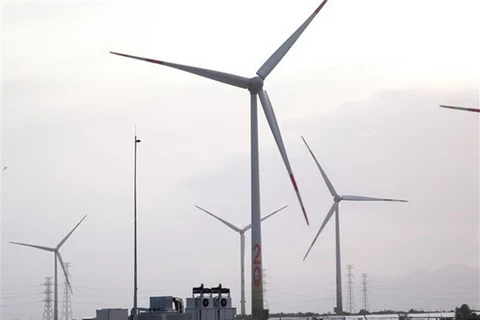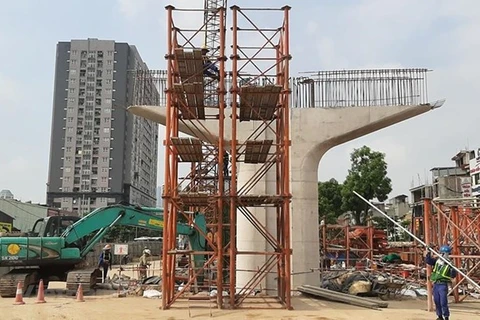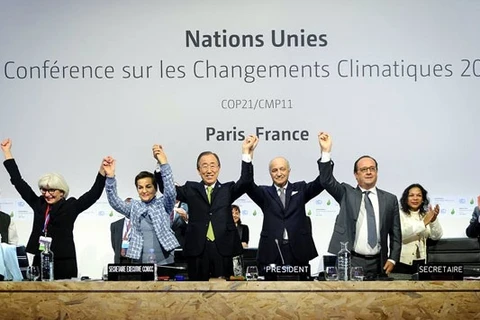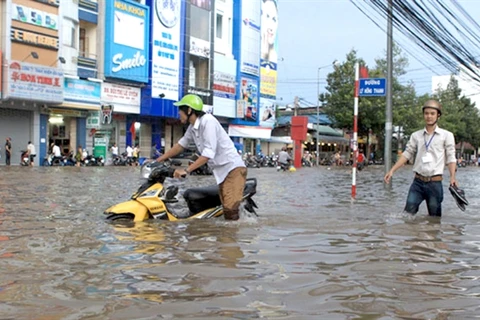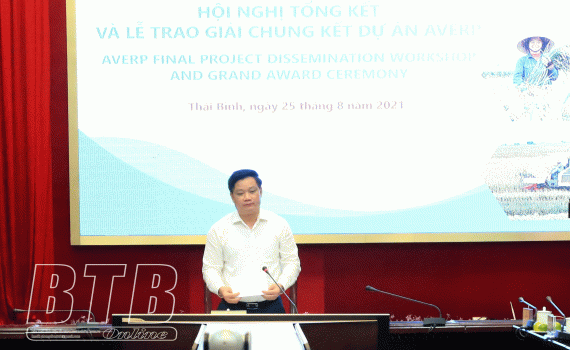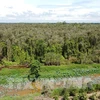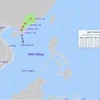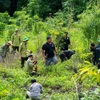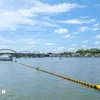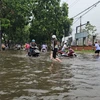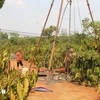Hanoi (VNA) - Vietnam needs to urgently issue a list of sectors and facilities required to conduct GHG inventories, which will serve as foundation for developing a database on GHG emissions at the grassroots, according to the Ministry of Natural Resources and Environment (MoNRE).
According to stipulation of the Paris Agreement on climate change, countries are responsible for implementing reduction of greenhouse gas (GHG) emissions through implementing their nationally determined contributions (NDC).
Vietnam’s updated NDC document was approved by the Prime Minister and submitted to the Secretariat of the United Nations Framework Convention on Climate Change (UNFCCC) in 2020.
Accordingly, the country is set to cut its greenhouse gas (GHG) emissions by 9 percent by 2030 compared to the Business-As-Usual Scenario (BAU), using its domestic resources.
Specifically, the country aims to reduce 210.5 million tonnes of CO2 compared to BAU in the 2021-2025, and 563.7 million tonnes of CO2 compared to BAU in 2026 – 2030.
To reaslise the goal, Vietnam has issued policies and taken actions to reduce GHG emissions and has achieved many positive results.
Measures and activities to reduce GHG emissions have been performed at different scales from the national level to the grassroots level through specific strategies, programmes and plans.
The management of GHG emissions through GHG inventories has been gradually implemented, basically meeting the requirements of the UNFCCC and effectively using international support sources.
The organization, apparatus and human resources for state management of climate change in general and mitigation of GHG emissions in particular have been strengthened at all levels.
However, Minister of Natural Resources and Environment Tran Hong Ha said the management of GHG emission reduction in Vietnam has remained limited with certain shortcomings, especially greenhouse gas inventories at the grassroots level.
GHG inventories have been only carried out at the national level within the scope of individual projects with international support.
Responsibilities of emitters in implementing solutions to GHG emission reduction are not clearly defined, while awareness of businesses and people of reduction of GHG emissions remains limited, Ha said.
The MoNRE said the issuance of a list of sectors and facilities required to conduct GHG inventories will help determine GHG emission quotas, develop carbon markets with the involvement of businesses operating in different economic fields.
It will also contribute to improving the efficiency of state management of GHG emissions nationwide and contribute to the implementation of Vietnam’s NDC.
The implementation of its NDC is considered to be Vietnam’s key task in responding to climate change in the country in the new period, meeting the requirements of domestic climate change response while fulfilling its responsibility of contributing to the international community’s efforts.
Implementing the updated NDC requires significant financial, technological and human resources. Measures to facilitate the implementation of the updated NDC include development and finalization of policies and institutions; communication, education, awareness raising; efficient development and application of resources.
Implementing its NDC, Vietnam will have more opportunities to promote international cooperation to respond to climate change. At the moment, many important international partners have shown their interest in and willing to support Vietnam in fulfilling its NDC, and there will be programmes and projects supporting the climate change response in Vietnam in the very near future.
The MoNRE has collected public opinions for the draft Decision of the Prime Minister on issuing a list of sectors and establishments required to conduct GHG inventories in 2022.
Accordingly, sectors and establishments operating in the fields of industry and trade, transport, agriculture and rural development, natural resources and environment, and construction will have to carry out GHG inventories in 2022.
After reaching agreement with the Ministry of Industry and Trade, the Ministry of Transport, the Ministry of Agriculture and Rural Development, and the Ministry of Construction, the MoNRE developed a list of facilities that are required to carry out GHG inventories.
A number of other cases where GHG inventories are also expected to be required include: thermal power plants, industrial production establishments with total annual energy consumption of at least 1,000 tonnes of oil, and freight transport companies and commercial buildings with total annual energy consumption of 1,000 tonnes or more./.


